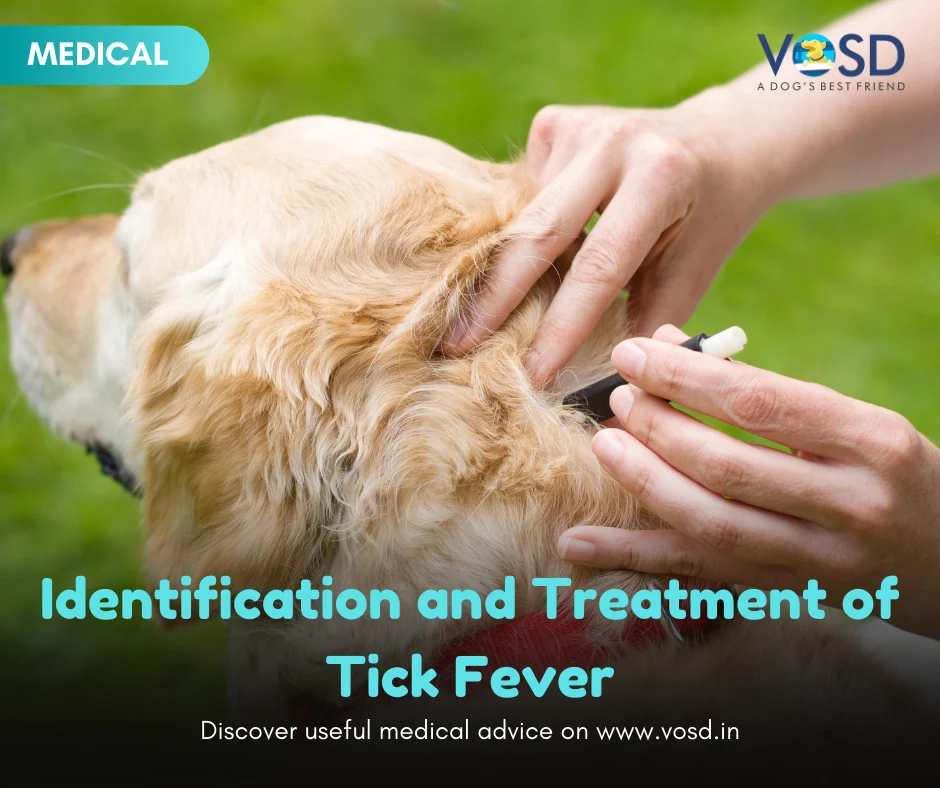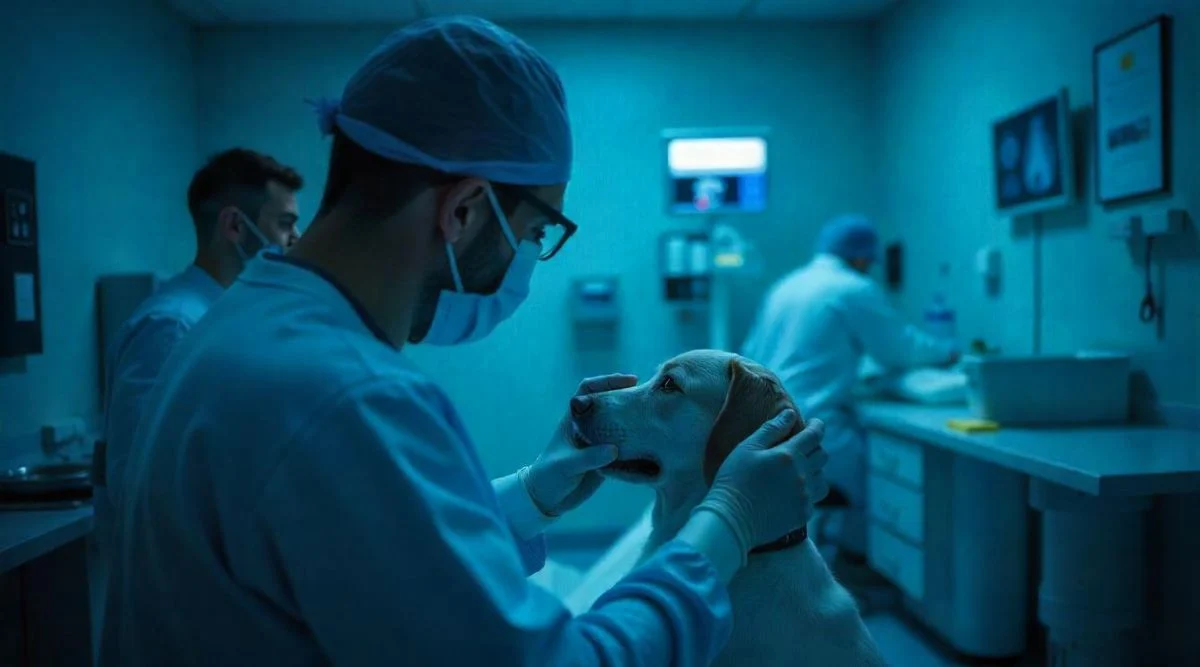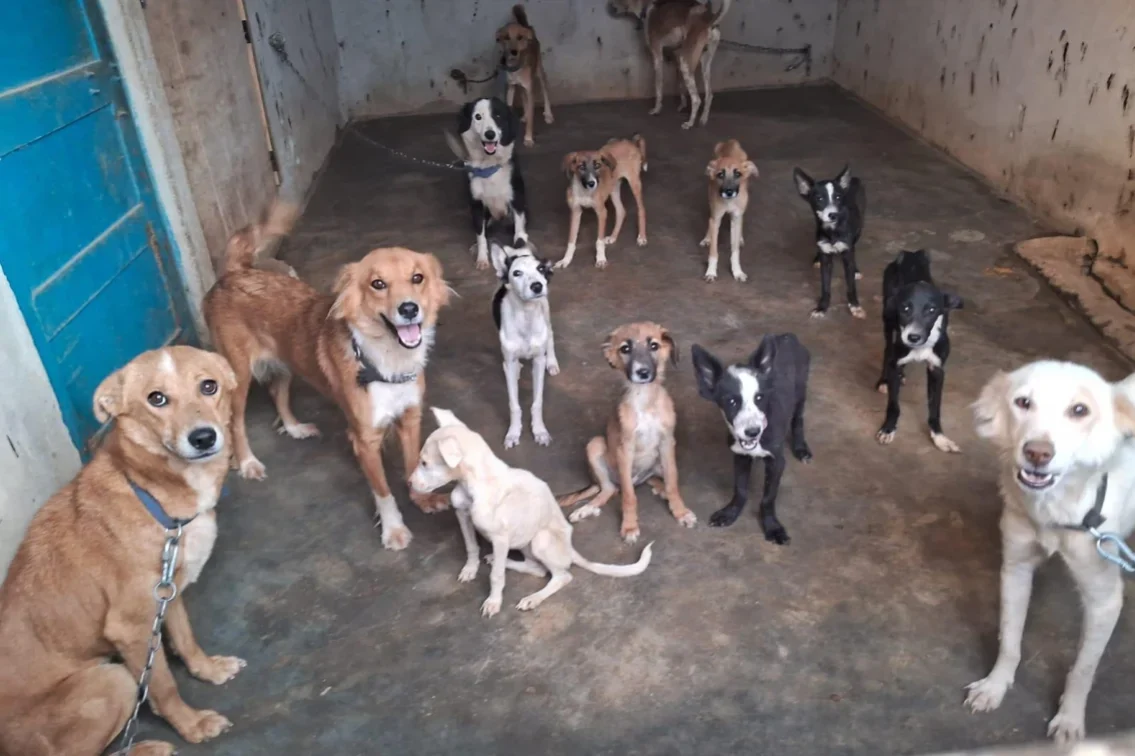Capillariasis is caused by a parasite called Capillaria plica. There are three species of this parasite. They are so small that they often measure less than half a centimetre in length. It is a roundworm and related to intestinal worms. They can be found not just in the intestines but also in other locations of the body. This parasite infects the urinary bladder and, in some cases, areas of the urinary tract. These worms also enter the nasal passage and the respiratory tract. The clinical symptoms are not specific, and the eggs laid by the parasite are shed intermittently, making an accurate diagnosis difficult. Capillariasis occurs when the dog comes into contact with contaminated water or food.
Symptoms of Capillariasis in dogs
Dogs with Capillariasis are asymptomatic. Only some of the dogs show signs that arise from the infection. The symptoms also vary depending on the specific infection. However, if your dog is affected severely, the following symptoms appear:
- Frequent and painful urination
- Blood in the urine
- Incontinence
- Nasal discharge and sneezing
- Wheezing, coughing, and pulmonary sneezing
Causes of Capillariasis in dogs
Capillaria worm, a parasite nematode causes Capillariasis. This parasite can be found anywhere in the world and spreads through contaminated food and water. This parasite’s size and appearance vary depending on the particular species. While it is more commonly found among wild animals, dogs can be infected, too. The lifecycle of the parasite has not yet been determined. But, the eggs of the worm are released through the urine of infected dogs. The embryos may get ingested by earthworms in the soil, and develop to an infective phase. These earthworms with the parasite get eaten by dogs leading to them contracting Capillariasis.
Capillaria boehmi causes nasal Capillariasis, residing within the sinuses and usually restricted to affect only dogs.
Capillaria aerophilus causes pulmonary Capillariasis, and the worms attach themselves to the lungs and trachea. This species lay eggs in the airways of the dog, and when the dog coughs, they get into the environment. Or, when the dog swallows the eggs, they get passed out into the environment through their stools.
Capillaria plica causes Capillariasis in the bladder and sometimes in the urinary tract. This parasite enters the wall of the bladder and sometimes gets lodged in some portions of the kidney. This is the species that shed the eggs into the urine, and that gets into the environment when the dog urinates.
Diagnosis of Capillariasis in dogs
As the symptoms of Capillariasis are not specific, and the cause is not easy to determine, your dog’s vet will start with a thorough physical exam to identify the infection. It will help if you take your dog to the vet even if you only see altered behaviour or notice a few signs of discomfort. Armed with your dog’s medical history, the vet will be able to create a complete medical profile.
Apart from the routine exam, the vet will order the usual blood tests to check the general health conditions of your dog.
In the case of Capillaria boehmi, the eggs are passed in the stools, and a faecal test will confirm their existence. They may also be revealed by rhinoscopy if they are lodged in the nasal passage of the dog. This will require inserting a small camera into the nasal passage under anaesthesia to try and identify the worms. These worms are also identifiable through the study of the dog’s mucous with the help of a microscope.
Capillaria aerophilus is best identified by examining the faecal matter through a microscope. Although this worm affects the respiratory tract, an x-ray or ultrasound of the chest region will not suffice.
Capillaria plica can be diagnosed by urinalysis as it affects the urinary tract and bladder. Inflammation or inflammatory cells may be revealed when studying the urine that may or may not have blood. Urinalysis, when examined, may also reveal microscopic eggs as these eggs from the parasite are intermittently shed into the urine.
Treatment of Capillariasis in dogs
Capillariasis is not difficult to treat once accurately diagnosed. The vet will prescribe antiparasitic medicines, and there is a variety of such deworming medicines available. Medicines such as ivermectin have been found very effective against Capillariasis. The vet may prescribe them as a one-time treatment or a course where your dog will be treated for around three to five days. Treatment may also be unnecessary if your dog has not become ill due to Capillariasis.
As part of the treatment, the vet will test the faeces again after medication to ensure that the eggs of the parasite have completely left the body.
Recovery from Capillariasis in dogs
During and after the treatment has been given to your dog, ensure that the water and food are clean and remain fresh and uncontaminated. It is also best if your dog is kept away from anything that may hold Capillaria eggs. You must monitor your dog daily for any symptoms that may appear. Once the infection has been resolved through the treatment, the symptoms should go away. All that will have to be done is to have the vet reexamine the dog to see that the parasite is no longer present in the body. If you have your dog staying in a kennel, you may need to replace the soil with another surface such as gravel, concrete, or sand.
Depending on where you live, reinfection is possible. Extra care to prevent recurrence would be essential.
Prevention of Capillariasis in dogs
You may be able to decrease chances of Capillariasis by ensuring that the environment is kept free of earthworms. Since that is not always possible, you may have to limit your dog’s access to eating earthworms as they are considered a source of Capillaria infections.
Disclaimer:
The information contained in VOSD Vet Advice™ is not intended nor implied to be a substitute for professional medical action which is provided by your vet. You assume full responsibility for how you choose to use this information. For any emergency situation related to a dog’s health, please visit the nearest veterinary clinic.





